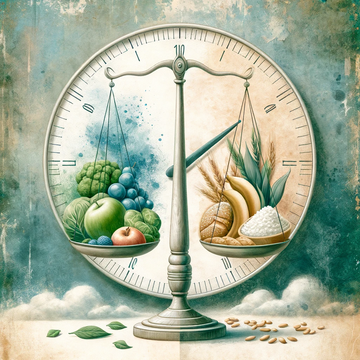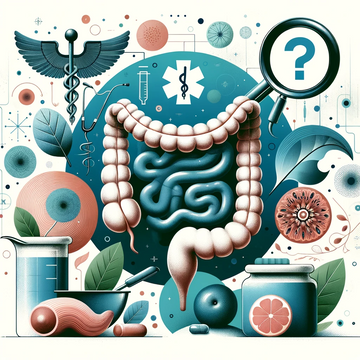Probiotic supplements are a great way to boost your body’s natural defenses and support digestive health. These friendly bacteria are created during the fermentation process and play a number of roles—you might not feel them if you have enough of them, but you’ll certainly feel their absence when you don’t.
But as the name suggests, supplements should be used to supplement your normal diet. They are a top-up—a way of ensuring you’re getting enough. If you want to maintain optimal levels of probiotics, you should start with your diet.
The Best Natural Sources of Probiotics
Probiotics are formed during the fermentation process. So, if you want foods high in these friendly bacteria, look for naturally fermented foods such as yogurts, cheeses, and fermented vegetables.
As far as the “best” sources of probiotics are concerned, all of the following foods come out on top.

Kombucha
Kombucha is a pretty hard sell. It’s essentially cold and bitter tea. But it’s delicious and, more importantly, it’s packed with probiotics.
Kombucha is made using something known as a SCOBY, which stands for Symbiotic Culture of Bacteria and Yeast. It looks like a slimy hockey puck and it is formed during the fermentation of yeast, lactic acid bacteria (LAB), and acetic acid bacteria (AAB).
Also known as the “mother” SCOBY serves as a home for the bacteria and also helps to protect it from harmful bacteria that might spoil the kombucha. This naturally-fermented tea is said to provide a number of health benefits, some of which come from its probiotic content.(1)
It may provide many of the same benefits as green tea, a drink that has been studied extensively and praised for its antioxidant effects. It has also been studied for its hepatoprotective effects (liver protection), although most of these studies were conducted on animals.(2)(3)

Kefir
Kefir is a fermented milk drink made by adding kefir grains to cow’s milk or goat’s milk. When you hear “kefir grains”, you might picture cereal grains like wheat. But they are actually a type of lactic acid and yeast culture, and it’s these grains that activate the fermentation process.
Kefir was originally made in the Caucasus and it has been consumed for hundreds of years. In the last decade or so, its popularity has spread around the world and you can find many commercially prepared kefir drinks in your local grocery store.
Studies suggest that kefir could possess antimicrobial, antitumor, and immunomodulatory benefits. It also plays an important role in digestion and can support the body’s intestinal flora.(4)

Yogurt
In a probiotic sense, kefir is basically a super-powered yogurt, but you don’t need to chug fermented milk to get the benefits alluded to above. In fact, natural yogurt contains many of the same bacteria cultures and can work wonders for your digestive tract.
The problem with yogurt is that many of the products you’ll find in your local grocery store have been commercially prepared. They are stripped of their bacteria cultures and loaded with sugars, sweeteners, and flavorings. They taste great, and they will give you a dose of protein and calcium, but they won’t do much for your gut.
Look for a minimally-processed yogurt, as it’s the processing that kills the live cultures. They are often labeled as “bio”, “natural”, or “live”. It’s okay for them to contain sugar, fruit, flavorings, and other added ingredients. You don’t need to eat flavorless yogurt to reap the benefits. It’s all about those live cultures, so check the label before you buy.

Tempeh
Tempeh is a fermented soybean product prized for its high protein content and meaty texture. If you follow a vegan or vegetarian diet, there’s a good chance you have stumbled across this foodstuff before. But tempeh’s benefits extend far beyond its protein content.
Soybeans are high in a compound known as phytic acid, which can hinder the absorption of zinc and iron. But the fermentation process greatly reduces the levels of this compound, thus improving your body’s ability to absorb those nutrients while still benefiting from the protein content.(5)
The fermentation process also produces vitamin B12, which is not naturally found in soybeans.(6)
If you find yourself eating a lot of tofu and other soy products to boost your protein intake, consider switching some of those tofu slabs for tempeh.

Sauerkraut
Sauerkraut is a type of fermented cabbage eaten in Germany and throughout Eastern Europe. It makes for a deliciously sour and salty side dish and is also very cheap, widely available, and relatively easy to make at home.
In addition to its probiotic content, sauerkraut is rich in vitamin K, antioxidants, and fiber. It’s low in calories too, so you don’t need to feel guilty about eating it and can add it to any meal.
The best sauerkraut is always unpasteurized, as the pasteurization process kills the bacteria and thus removes those probiotic benefits.
One of the few downsides to eating this fermented side dish is that’s it’s very acidic and may cause problems for people suffering from GERD, as well as those who are more susceptible to acid reflux. Other than that, it’s one of the best probiotic foods that you can eat.

Kimchi
Kimchi is very similar to sauerkraut. It’s a South Korean side dish made by fermenting cabbage and other vegetables. The difference is that it is then seasoned with a range of herbs and spices, including ginger, garlic, and chili.
Kimchi contains the bacteria Lactobacillus kimchi, which may provide a range of health benefits, including cholesterol reduction, anticonstipation, and immune support. (7)
As with sauerkraut, kimchi is high in fiber and a range of vitamins, minerals, and antioxidants. It’s also something that can be added to any savory meal. In South Korea, kimchi is served with most meals and can often be found alongside steamed rice. It’s also becoming increasingly common in the United States and you can find jars of kimchi in most major grocery stores.

Miso
Miso is used as a seasoning in Japan. It’s made by fermenting soybeans, salt, and koji. It’s salty, unique, and perfect for soup. Miso is a fantastic soup of protein, fiber, and a variety of vitamins and minerals. It can also benefit your gut microbiome.
Studies suggest eating miso soup and beans could reduce the risk of cardiovascular disease and overall mortality, so its benefits extend far beyond the gut.(8)

Pickles
Pickles aren’t just a great low-calorie snack or a way to jazz up your burger or salad. They are also a type of probiotic, as they are created following a lengthy fermentation process. It’s the fermentation that makes them sour, and the longer they are left to ferment, the better.
Pickles are high in vitamin K, which is used by the body to build strong bones and aid with blood clotting.
There are a couple of potential issues to be aware of, though. Firstly, as with sauerkraut and kimchi, pickles are very acidic and could trigger acid reflux, especially if you’re eating a lot of them. They are also very high in salt. They are so low in calories that you could theoretically chow down on them all day, but doing so would lead to a very high sodium intake.
5 small pickles will give you between 2g and 2.5g of sodium. The daily recommended intake is 2.3g.

Traditional Buttermilk
There are two types of buttermilk. Cultured buttermilk is the one you will find in most US stores. It’s used in many dessert recipes and it’s good to have some on hand if you’re making waffles, pancakes, or biscuits. It’s “cultured” because it has live cultures added to it and these can have a probiotic effect.
Traditional buttermilk also has probiotic effects and may be a better source for drinking and adding to certain recipes. It’s not as easy to find, but it’s more of a natural product, as it’s basically just the liquid that remains after churning butter.
Buttermilk is high in protein and contains a number of beneficial nutrients, including B vitamins and calcium. However, it also contains around 100 calories per cup, as well as 3 grams of fat.

Unpasteurized Cheese
Most cheeses are created via a fermentation process, but they are also pasteurized, so they are low in probiotics. There are some notable exceptions though.
For instance, some forms of cottage cheese contain live cultures that may have some beneficial effects on your gut health. The same is true for unpasteurized cheese.
In the United States, unpasteurized cheese must be aged for at least 2 months before it can be sold, as it’s thought that this aging process helps to kill bacteria such as salmonella and listeria.
This law effectively rules out many popular types of unpasteurized cheese, including Brie, Roquefort, and Camembert, as they don’t have the shelf-life needed to survive those 60 days. Still, there are some options left on US supermarket shelves, and if you ever find yourself in Europe (or pretty much anywhere outside the United States) you can enjoy a wider variety.

Natto
Natto, just like miso and tempeh, is a type of fermented soybean product that you can find in many Japanese kitchens. It’s a staple in the Land of the Rising Sun, and you can also find it in Asian supermarkets here in the United States.
Natto is somewhat of an acquired taste. It’s essentially a slimy soybean dish and it has a very pungent odor and distinctive taste. In the west, it has actually featured in the British version of I’m a Celebrity…Get Me Out of Here in which celeb contestants are forced to endure torturous trials.
Culture Club frontman Boy George was given some of the beans as part of an “eating challenge”, whereby contestants are given the most disgusting foods imaginable. Needless to say, it’s not treated with the same reverence in the west as it is in Japan, but it’s a delicacy for a reason and can be delicious.
Natto contains a strain of bacteria known as Bacillus subtilis, which may provide some digestive benefits. These beans are also high in protein, vitamin K2, and minerals.
In one study on Japanese men, it was found that natto could contribute to higher bone density in old age. In another, similar benefits were reported in premenopausal women.(9)(10)

Summary: Boost Your Probiotic Intake
These are just some of the foods that contain probiotics. You can find these beneficial bacteria in a host of other foods and supplements, including ColoFlax, which is packed with fiber, prebiotics, probiotics, essential fats, and nutrients.
So, if you’re feeling a little under the weather and are struggling with bouts of constipation, flatulence, and general digestive malaise, consider adding some of these probiotic foods to your diet.
References
- https://pubmed.ncbi.nlm.nih.gov/24290641/
- https://pubmed.ncbi.nlm.nih.gov/8617188/
- https://pubmed.ncbi.nlm.nih.gov/21388793/
- https://pubmed.ncbi.nlm.nih.gov/24294220/
- https://ift.onlinelibrary.wiley.com/doi/abs/10.1111/j.1365-2621.1985.tb13325.x
- https://pubmed.ncbi.nlm.nih.gov/8060790/
- https://pubmed.ncbi.nlm.nih.gov/24456350/
- https://pubmed.ncbi.nlm.nih.gov/18025534/
- https://pubmed.ncbi.nlm.nih.gov/21394493/
- https://pubmed.ncbi.nlm.nih.gov/12350079/





